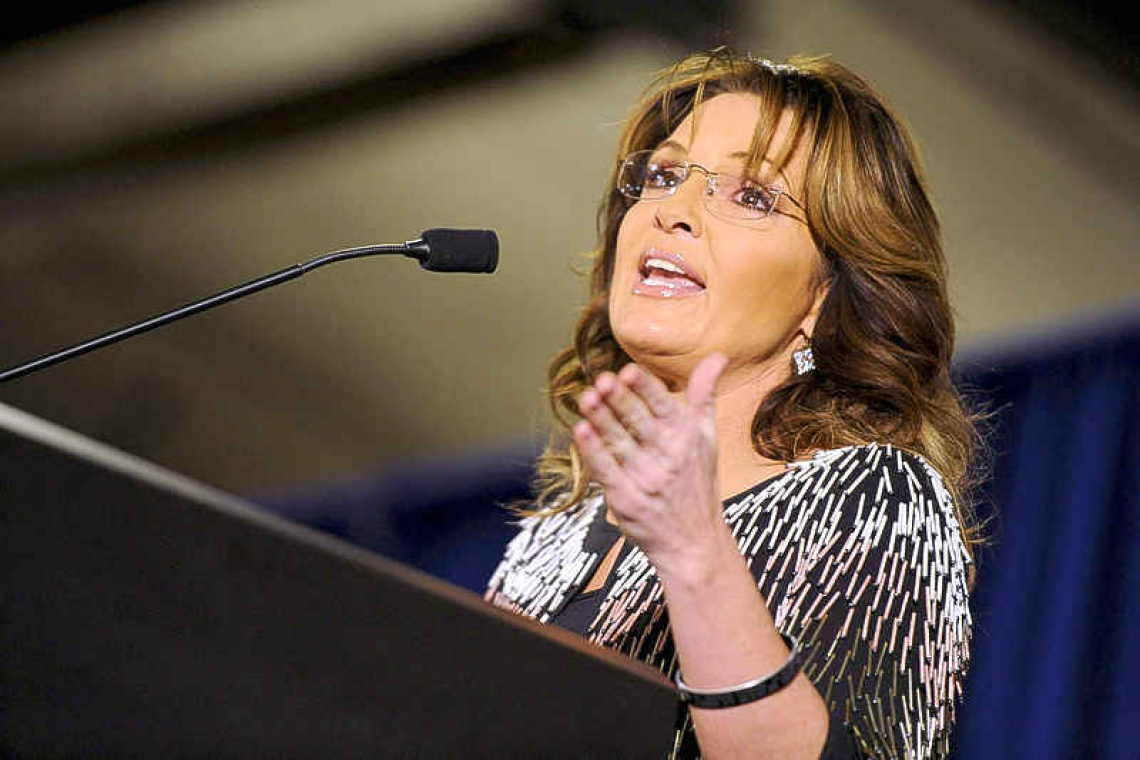NEW YORK--Sarah Palin, the former Alaska governor and 2008 Republican vice presidential nominee, has spent 4-1/2 years battling the New York Times over an editorial she said falsely linked her to a deadly Arizona mass shooting that left a U.S. congresswoman seriously wounded.
On Monday, Palin is poised to try to begin convincing jurors in a lawsuit in Manhattan federal court that the newspaper and its former editorial page editor James Bennet defamed her. The trial before U.S. District Judge Jed Rakoff marks a rare instance of a major media company defending its editorial practices before an American jury. Opening statements could take place as soon as Monday, following jury selection.
Palin bears the high burden of showing by clear and convincing evidence that there was "actual malice" involved in the newspaper's editorial writing process. "This is a lawsuit over an editorial, essentially an opinion. This is a potentially dangerous area," said Roy Gutterman, a Syracuse University law and communications professor. "If we give public officials a green light to litigate on editorials they disagree with, where's the end?"
Palin, 57, has accused the Times of defaming her in a June 14, 2017, editorial linking her political action committee (PAC) to the 2011 mass shooting in an Arizona parking lot that left six people dead and then-U.S. Representative Gabby Giffords wounded. Palin is seeking unspecified damages, but according to court papers has estimated $421,000 in damage to her reputation.
The editorial said "the link to political incitement was clear" in the 2011 shooting, and that the incident came after Palin's PAC circulated a map putting 20 Democrats including Giffords under "stylized cross hairs." It was published after a shooting in Alexandria, Virginia in which U.S. Representative Steve Scalise, a member of the House of Representatives Republican leadership, was wounded.
Palin objected to language that Bennet had added to a draft prepared by a Times colleague. She said the added material fit Bennet's "preconceived narrative," and as an "experienced editor" he knew and understood the meaning of his words. The Times quickly corrected the editorial to disclaim any connection between political rhetoric and the Arizona shooting, and Bennet has said he did not intend to blame Palin.
Bennet's "immediate sort of emergency mode or panic mode" upon learning what happened strongly suggests he had been unaware of any mistake, said Benjamin Zipursky, a Fordham University law professor. "Negligence or carelessness - even gross negligence - is clearly not good enough for Palin to win," Zipursky said.
It has been 58 years since the U.S. Supreme Court adopted the "actual malice" standard in the landmark decision called New York Times v. Sullivan, which made it difficult for public figures to win libel lawsuits. Two current justices, conservatives Clarence Thomas and Neil Gorsuch, have suggested revisiting that standard. Palin has signaled in court papers she would challenge the Sullivan case precedent on appeal if she loses at trial.
Don Herzog, a University of Michigan law professor, said Palin would have trouble showing that the Times "subjectively doubted or disbelieved" the truth of what it presented as fact. "In context, and given the kind of publication it was, this is a matter of opinion and so simply not actionable in defamation," Herzog said.







